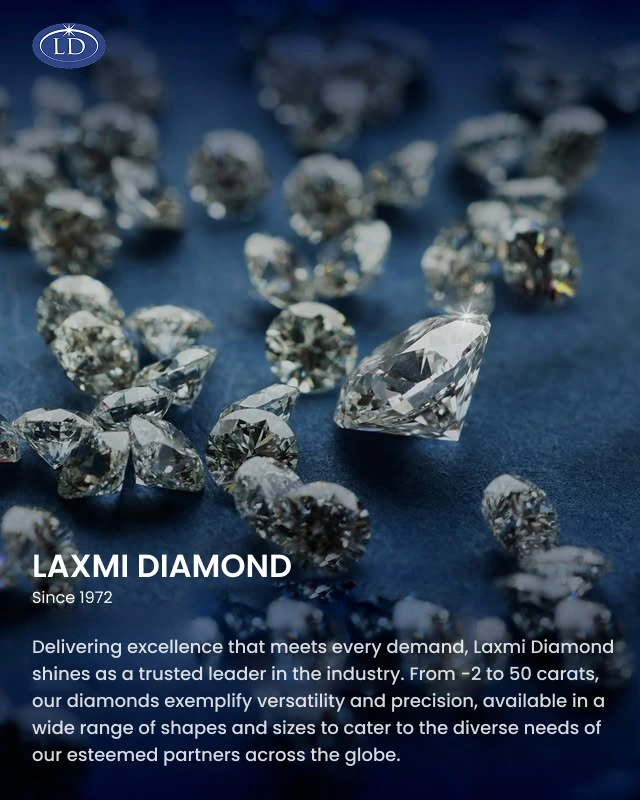
Understanding Diamond Certification And Grading
The unparalleled beauty of each gemstone reflects its uniqueness. But, it is not only a diamond's physical appearance that makes it so distinctive. A diamond's quality is also determined and differentiated by its characteristics, defined by the 4Cs. The categorisation comes into the picture while a diamond treads its path from mine to man during the grading process.
While grading is an expert's task, the basic know-how is incredibly crucial for making the right purchase decision while investing in a diamond.
Diamond Grading
Grading is the step that follows the polishing of a rough diamond. In this process, experts evaluate the cut, colour, clarity and carat of a gemstone to determine its quality and value. Even minute differences in these four characteristics significantly contribute to the overall valuation of a diamond.

The Need For Diamond Grading and Certification
Given the precious nature of diamonds, determining their correct value is crucial. Along with the valuation, grading also helps people analyse the value they pay for a specific price. If it weren't for grading, the valuation of diamonds would be subjective and cause deviation in their valuation. Therefore, grading helps eliminate subjectivity and establishes uniformity for valuation.
GIA Diamond Grading
Almost a majority of diamonds appear to be the same to the naked eye of an average individual. But, grading requires a high level of precision and expertise in the field. While several grading entities are out there, the industry recognises and relies on the Gemological Institute of America to be the most consistent grading entity.
The GIA diamond grading scale facilitates an unbiased method for diamond evaluation by using the four Cs as a universal language to communicate a gemstone's quality. GIA's work and reputation establish that the GIA grading reports can be considered the final word, specifying a diamond's quality.

Diamond Grading Process
The gemologists at GIA treasure every single gemstone with utmost care. The entity also maintains the anonymity of diamonds throughout the process and tracks them electronically. The evaluation process carefully examines the four Cs and assign grades for each trait.
Upon conclusion of this process, the GIA issues a diamond certification for each stone, which also goes through several security components before final lamination. Following that, the GIA delivers these stones and the manufacturers' certificates.

Diamond Grading and Certification Factors
Colour is often the first grading factor for a gemstone. GIA carries out the colour grading process in a standardised viewing environment, carefully considering the light source and the background. Under this process, the stones are colour-graded by comparing them to round brilliant cuts, known as master stones of known colour.The colour scale ranges from grades D to Z, classifying diamonds under the categories of Colourless, Near colourless, Faint, Very light and Light diamonds.
Out of all the four C's, experts believe that the diamond cut stands out as the most important determining factor. It combines symmetry, facet positioning, cutlet size, polish and shine. This grade is only applicable for standard, round cut brilliant diamonds and contributes significantly to the gemstone's value. Cut grades under the GIA grading system are classified as excellent, Very good, Good, Fair and Poor.

Gemologists use electronic microbalance equipment to measure the carat weight when assessing the diamond carat grade. This device captures the weight precisely to the fifth decimal point. Along with that, an optimal measuring device traces out the exact proportions, measurements and facet angles. Some diamond weights, such as a carat, half a carat and three-quarter carat as considered magic sizes.
Diamond clarity evaluates a gemstone's visual appearance and considers the absence of inclusions and blemishes. The clarity is often examined with 10x magnification under standard viewing conditions. Examiners look for the number, size, nature, and position of imperfections, determine evidence of previous treatments on the diamond and finally, conclude the diamond's overall clarity.
The GIA scale system specifies 11 different clarity grades. These include Flawless, Internally Flawless, two categories of Very, very slightly included, two categories of Slightly included and three categories of Included.
Reading a GIA Grading Certificate
While purchasing a certified diamond, a customer should examine the GIA grading report, considering factors such as:
• The date of certification and GIA unique ID of the diamond
• The shape of the diamond
• The dimensions
• Identifying the carat weight, rounded to nearest 0.01 ct
• The colour, clarity and cut grades
• The polish, symmetry and fluorescence grades
• The inscription laser on the diamond girdle
• Any additional comments by gemologists
In most cases, the cost of the diamond is directly proportional to the higher grades of the four Cs.

Certified Stones at Laxmi Diamond
Laxmi Diamond believes that ensuring complete transparency throughout their handling with diamonds is an ode to the gemstone's purity. Therefore, each stone at Laxmi Diamond goes through a state-of-the-art process and is sent for grading. The Laxmi Diamond mobile and web App displays a comprehensive inventory of select gems along with its GIA certification for buyers. The know-how of diamond grades essentially helps a customer read and decode the GIA diamond certificates with a better understanding and, therefore, make an informed choice.








